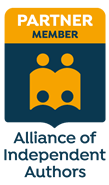From Research to Readability: Helping Readers Understand Your Work
You’ve poured years into your research—now it’s time to share it in a way readers will actually understand. This guide walks researchers through using plain language to turn complex findings into clear, engaging writing. Learn how to identify your audience, decide what belongs (and what doesn’t), structure your chapters, and avoid academic jargon so your work is both readable and usable. With practical tips and real examples, you’ll see how to make your research resonate with the people who need it most.
Published On: 09/22/20255.9 min readAvoiding Plagiarism and Citing Responsibly
Learn how to avoid plagiarism with clear examples and practical advice on when and how to cite sources, including quotes, paraphrased ideas, data, visuals, and AI-generated content. Build reader trust with ethical writing habits.
Published On: 06/23/20259.1 min readCrafting a Strong Introduction—Hook Readers from the Start
Your book's introduction is key to grabbing attention and enticing readers to continue. Avoid overexplaining and dry, academic openings—focus on creating a compelling hook, promising value, building trust, and providing a roadmap for what’s to come. Craft an introduction that speaks directly to the reader's needs, sets the tone, and sparks curiosity. Whether through anecdotes, bold statements, or thought-provoking questions, a strong introduction is the first step in making a lasting impression.
Published On: 03/26/202512.5 min readReinforce, but Avoid Being Repetitive in Your Nonfiction Book
Yes, we learn through repetition, but purposeful repetition and redundancies are different. Redundant content annoys readers, so learn how to avoid redundancies and how to fix common trouble spots.
Published On: 12/23/20245 min readMake Your Nonfiction Book More Reader Friendly
Too many boring nonfiction books exist. Don’t add to the pile. Instead, write a good nonfiction by making your book more reader friendly, using these tips.
Published On: 07/10/20249.7 min read6 Tips for Writing a Self-Help Book
Self-help is an oversaturated market so your book may flop, but it also has a built-in audience, which can help your book soar—if you write a good one that is. So learn 6 tips for writing an effective self-help book that will reach audiences and do well.
Published On: 06/12/20246.2 min readEffective Organization for Nonfiction Book
When the organization of your nonfiction book is random and ideas seem disjointed, it impedes flow and makes it harder to follow your ideas. Even if your ideas themselves are clear, the lack of organization can muddle them. So learn how to determine chapter order, use headings and subheadings, and write effective transitions.
Published On: 04/10/20248 min readVarying Sentence Beginnings
If too many of your sentences start the same way, your writing can begin to sound choppy and monotonous. This article explains how to vary your sentence beginning sand how to know when to do so.
Published On: 10/17/20188.5 min readEffective Transitions that Aid Your Reader’s Comprehension
When writing an essay or a nonfiction book, it is important to have transitions connecting your topics together. This blog post describes how to do that in easy to follow steps, and then provides examples from essays and nonfiction books.
Published On: 02/13/20185.6 min read
